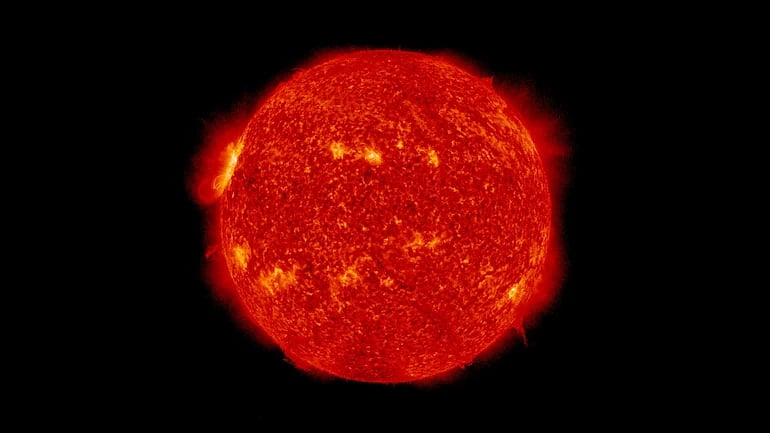On Sunday, a strong shortwave radio blackout occurred over southeast Asia and Australia due to a solar flare hurled from the sun. Seems like Solar activity is again picking up pace after a geomagnetic storm hit earth. It is interrupted that the sun is likely to erupt with more flares this week.
The X1 class flare was accompanied by a Coronal Mass Ejection (CME) from a cluster of active sunspots that have produced significant flaring prior to appearing on the eastern limb of the sun. CMEs are huge bubbles of radiation and particles from the sun. They explode into space at very high speed when the sun’s magnetic field lines suddenly reorganize. Big flares can cause major disruptions on the earth.
Earlier, From Region 2994 and 2993 the flare that originated caused a brief radio blackout and was classified as a Type II solar radio burst.
According to NASA, a solar flare is an intense burst of radiation coming from the release of magnetic energy associated with sunspots. Flares are our solar system's largest explosive events. They are seen as bright areas in the sun and they can last from minutes to hours.
Although solar flares are high in radiations it's not dangerous to humans. This absorption of high-energy electromagnetic radiation can temporarily increase the ionization of the upper atmosphere, which can interfere with short-wave radio communication and can temporarily heat and expand the earth's outer atmosphere. This expansion can cause increased drag on satellites in low earth orbit and can lead to orbital decay over time, but not cause any effect on humans.
Here's what the experts have to say:
"Solar activity is expected to be active over the next week as these sunspots migrate across the visible disk. The latest forecast from the Space Weather Prediction Center comes after the Sun erupted, hurling flares towards the inner planet, including Earth," the agency under the National Oceanic and Atmospheric Administration said in an update.
According to spaceweather.com, the sunspot complex AR2993-94, produced an X1-class solar flare on April 17, maybe just the beginning. Another potentially large active region is right behind it. The sunspots appeared on Sunday and Nasa's Solar Dynamics Observatory is tracking its progress.
"This sunspot group has been active for more than a week, hurling CMEs and plumes of plasma into space from its location on the far side of the sun. Now it is turning to face earth and shows no signs of slowing down," the space observer said.
The host star of our solar system had previously erupted, sending out plasma towards Earth that hit the planet, causing a geomagnetic storm last week.









